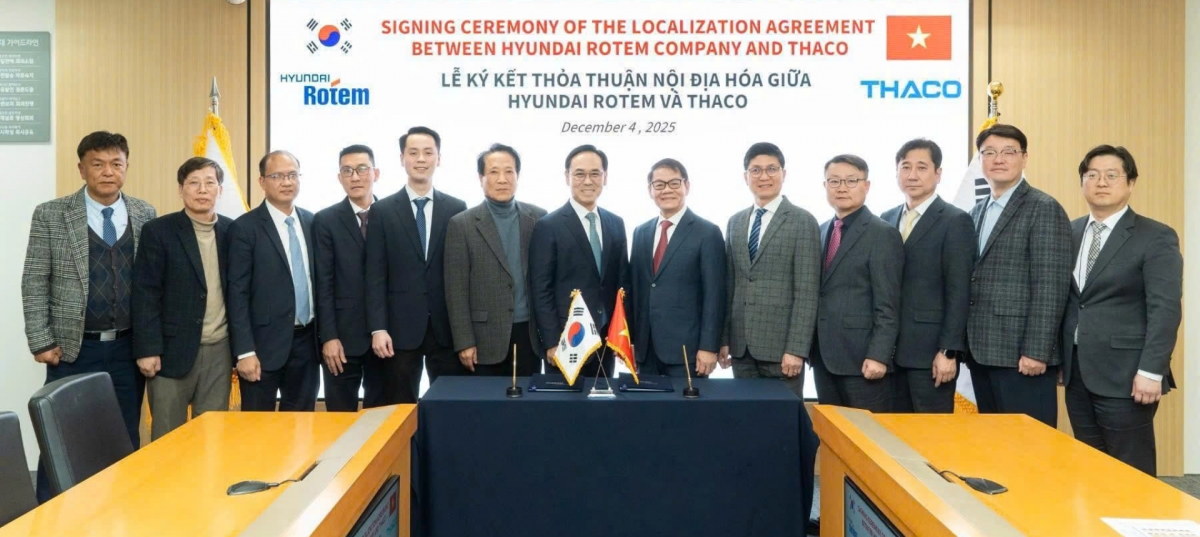INTERNATIONAL INVESTMENT
AND PORTAL
Foreign direct investment (FDI) inflows to ASEAN reached another historical level of $230 billion in 2023, reinforcing ASEAN's position at the top of FDI recipients among developing regions.
 ASEAN reinforces its position at the top of FDI recipients among developing regions. Photo: baodautu.vn
ASEAN reinforces its position at the top of FDI recipients among developing regions. Photo: baodautu.vn
The 'ASEAN Investment Report 2024: ASEAN Economic Community 2025 and Foreign Direct Investment' was launched on October 9 during the ASEAN Business and Investment Summit 2024.
According to the report, foreign direct investment (FDI) inflows to ASEAN reached a record $230 billion in 2023. While the increase was marginal–less than 1 per cent–it occurred despite a 10 per cent decline in global FDI. This marked the third consecutive annual increase, solidifying ASEAN’s position as the largest FDI recipient among developing regions, accounting for 17 per cent of global inflows, up from 16.5 per cent in 2022.
In 2023, the top five industries accounted for 86 per cent of inflows. FDI in financial activities, including banking, insurance, investment funds, and finance functions of multinational enterprises, rose by 53 per cent to $92 billion. Investment in high value-added services, such as professional, scientific, and technical (research and development) activities, surged from $0.3 billion to $21 billion. These investments in knowledge-based and higher value-added activities are supporting industrial upgrading in several ASEAN member states.
While investment in manufacturing, wholesale and retail trade, and transportation and storage declined, manufacturing remained significant, attracting more than $50 billion in FDI inflows, or 22 per cent of the total. Moreover, the number of new greenfield investment project announcements in manufacturing more than doubled in 2023.
Investment from the top 10 source countries accounted for 80 per cent of total FDI in 2023, up from 75 per cent in 2022. The United States and China were particularly prominent, with FDI from the US more than doubling to $74 billion, representing a third of all FDI in the region. Intraregional investment fell by 35 per cent to $21.9 billion, lower than the pandemic-era level of $22.4 billion in 2020.
Chinese enterprises continue to play a transformative role in shaping the regional FDI landscape, especially in manufacturing. FDI flows from China have grown at an average annual rate of 33 per cent since 2020. Both first-time and existing Chinese investors are expanding in industries such as automotive, electronics, and renewables across ASEAN.
Another significant trend is the rise of investment in the renewable energy supply chain, spanning upstream (mining and processing of critical minerals), midstream (component manufacturing), and downstream (renewable energy generation). Between 2020 and 2023, renewable energy-related industries attracted an average of more than $27 billion annually in announced greenfield investment projects, accounting for around 25 per cent of the total.
Investment in renewable energy generation rose from an annual average of $11 billion in 2015–2019 to $14 billion in 2020–2023, with approximately two-thirds going into solar and wind power. The number of international investment projects in renewable energy generation increased by 15 per cent per year on average in ASEAN, compared to 11 per cent globally.
The report also noted that FDI in Vietnam rose to a record $18.5 billion in 2023, up from $17.9 billion in 2022. Manufacturing remained the largest recipient of funding from abroad, followed by real estate and electricity generation.
Energy was a bright spot for Vietnam, with large projects such as the $2 billion Thai Binh liquefied natural gas power plant by a consortium involving Tokyo Gas and Kyunden (both Japan), a $1.5 billion photovoltaic cell production project by Jinko Solar (China), and a $1.1 billion electronic component manufacturing project by LG Innotek (Republic of Korea).
Asian investors from China, Japan, Hong Kong (China), South Korea, Singapore, and Taiwan (China) accounted for more than 80 per cent of inflows into Vietnam.
 Vietnam sustaining growth amidst shifting FDI trends
Vietnam sustaining growth amidst shifting FDI trends
Trade ties between the US and emerging market economies in the Asia-Pacific region are shifting from efforts to diversify supply chains out of China through “friendshoring” or “nearshoring”. Against this backdrop, Vietnam is among the Asia-Pacific markets relatively well-placed to gain from such shifts.
 Vietnam reports FDI jump of 11.6 per cent
Vietnam reports FDI jump of 11.6 per cent
More than $24.78 billion in foreign direct investment (FDI) flowed into Vietnam in the first nine months of 2024, climbing 11.6 per cent on-year, according to the Foreign Investment Agency.
 FDI remains high despite global change
FDI remains high despite global change
Despite global turbulence, Vietnam is emerging with stable growth and is a favoured destination for diverse foreign direct investment (FDI) flows, particularly from Singapore, China, and Japan, according to a recent seminar.
By Thanh Van



















